Some sales reps can see cold calling as a nerve-wracking activity or a chore, but it can be an effective way of selling your product or service to customers.
Follow this guide to eliminate the negatives associated with cold calling with the help of sales CRM software and build positive relationships with customers.
What Is Cold Calling?
Cold calling is often the first step in the sales process. It involves reaching out to potential customers or clients you haven’t previously connected with. During the call, you’ll aim to gauge interest, identify decision-makers, and schedule a pitch meeting if needed.
Cold calling remains a business enabler. It generates revenue and fosters new connections with leads. Businesses that fail to use cold calls run the risk of not creating enough revenue to keep their business afloat.
At this point, you may think that cold calling is time-consuming. It can be if your sales CRM tool doesn’t support an autodialer feature. Not only does it eliminate the manual dialing activity (which is prone to errors), but it also bridges the data gap between departments and drives real-time resolution of customer queries.
Discover the 6 advantages of using autodialer integration in a CRM here.
Is Cold Calling Still Effective in Today’s Sales Strategies?
Cold calling is no longer about blasting a list of strangers with autodialers. The old approach: calling people at inconvenient times and leaving voicemails, is largely ineffective today. Most people don’t answer unknown numbers or even check their voicemails.
How Cold Calling Works Today
Modern cold calling succeeds when you focus on three core strategies:
a) Take an Omni-Channel Approach
Use multiple sales channels: phone, email, text, live chat, social media, voice notes, and even online groups. Combining channels increases your chances of reaching prospects effectively.
b) Lead with Value First
Your opening pitch must deliver immediate, relevant value. Skip introducing yourself or your company at first—focus 80% on providing value and only 20% on pitching. Short, compelling messages work best.
c) Warm Up Your Leads
Engage prospects across channels before calling. Use lead magnets, offers, and content that builds rapport, trust, and confidence. Warming up makes it easier for prospects to self-identify and respond positively.
Why Cold Calling Isn’t Just a Numbers Game
Isn’t calling leads all just a numbers game? Can’t I just reach out to as many prospects as possible?
Technology has shifted the balance of power to buyers. Prospects can ghost, block, or screen calls at will. Simply calling more people won’t increase results; building trust and rapport is essential.
Prospects need ingredients like rapport, trust, and confidence before they’ll pick up your call. Warmed-up leads are more receptive, making your calls more likely to succeed.
Key Takeaway: Cold calling succeeds when you warm leads, offer immediate value, and use multiple communication channels. Numbers alone don’t guarantee success.
Cold Calling: Script or No Script?
Opinions on cold calling techniques vary. Some argue scripts are a waste of time, and others say they are essential.
A hybrid approach often works best. It provides new sales reps with a flexible script that can eventually evolve into a conversation framework for cold calling outreach.
Regardless of whether you decide to follow a script, you should have a plan. If you don’t grab a lead’s attention in the first 30 seconds, you’re setting yourself up for failure.
Your opening should clearly communicate:
- Who you are
- What business you represent
- Why you’re calling
- Areas of potential interest or need for the prospect’s company
The Benefits of Using a Script for Cold Calling
Since there is so much to remember with a lot of information to state early on, many companies like to cover their bases by having sales reps stick to a script during a cold call. With a script, companies can create consistency throughout their sales department and make it easy to integrate new hires into their team. Overall, companies should be aware of the many benefits to using scripts.
- Consistent branding: Using a script, you can help your sales team keep the company’s brand and voice steady. You don’t want a sales rep to damage the company’s reputation with a potential client.
- Rebut objections: Often, customers will have objections to buying a product. Instead of asking your sales staff to come up with new, compelling arguments every time they receive an objection, a script can help sales reps use tried-and-true responses to push-back from potential clients.
- Decreased stress: For sales reps, especially new hires, a script can help reduce their stress about how to cold call. They might not know how to correctly communicate the benefits of what you’re offering. A script eliminates this stress by giving them everything they need to know to make a sale.
- Team success: Since everyone is using the same script, if you find one that works well, your entire team will benefit. A less structured approach may make for remarkable individual success, but could fail to achieve more substantial team success.
An Alternative to Scripts for Cold Calling
One alternative to cold calling is a discussion framework.
What is a Discussion Framework for Cold Calling?
A discussion framework is a flexible alternative to rigid cold calling scripts. It serves as a guideline rather than a word-for-word script, allowing sales reps to adapt conversations to the prospect naturally.
Why Traditional Cold Calling Scripts Can Be Problematic
While scripts help new sales reps, they can create issues. Following a script too closely can make voices sound robotic. Scripts that aren’t flexible may frustrate reps and prevent them from responding authentically to prospects’ questions.
Benefits of a Discussion-Based Script
Transitioning to a discussion framework can make calls feel more natural and conversational, increase trust with prospects, and provide space for a genuine give-and-take dialogue rather than a one-sided pitch.
Cold Calling as a Two-Way Conversation
The goal of a cold call is discovery, not closing a deal. Reps should listen actively, respond authentically to questions or concerns, ask questions to uncover company needs and decision-makers, and focus on setting up a future meeting rather than pitching immediately.
Key Takeaway: Cold calling scripts provide guidance, especially for new sales reps. The most effective cold calls, however, are flexible, authentic, and value-driven, using discussion frameworks to turn outreach into meaningful, trust-building conversations.
8 Tips for Making Successful Cold Calls
TL;DR of best practices of cold calls for sales outreach:
Define objectives and targets: Cold calls should focus on qualifying leads and scheduling pitch meetings, not closing every deal. Research prospects and set clear short- and long-term goals.
Prepare mentally: Adopt a service-oriented mindset. Believe in the value of your product or service.
Control your narrative: Maintain an internal locus of control. Learn from past calls, but focus on growth and improvement.
Warm up leads via social media: Engage consistently on platforms where prospects are active to reduce cold-call resistance.
Execute effective calls: Prepare, lead with value, ask intelligent questions, and aim for clear next steps.
Follow up efficiently: Use calendar integration to schedule next meetings and reduce prospect effort.
Document in CRM: Capture key details and insights in Pipeline CRM for future follow-ups and strategy planning.
Measure and optimize: Track call outcomes, analyze patterns, and refine scripts or workflows based on data.
1. Before Making the Calls: Determine Your Objective and Identify Your Target
Your objective for cold calling should not be to make a sale. While you shouldn’t turn down the opportunity if a company wants to purchase your services immediately, you should be more focused on realistic goals. Use cold calling to make initial contact with prospective clients, figure out if they have real potential to become customers, and lock down a pitch meeting to discuss your services and products in greater depth—all while recording the key notes in your sales CRM software.
If you want a successful cold call, crafting a clear objective for yourself or your sales team is crucial. Not only can you set short-term goals for a single cold call, but you can also set long-term goals for your cold call campaign. For instance, you can aim to get 100 prospective customers on the line and convert 10% of those conversations into face-to-face meetings with prospects who need your offering.
Other goals you could focus on include:
- Testing the level of demand for your product and services
- Improving how you communicate your product or service’s value
- Learning how much customers are willing to pay for what you’re offering
- Discovering who is going to be in the decision-maker’s ear for the sale
- Figuring out which decision-maker you should target
- Identifying potential clients who have the most need for your product or service
- Practicing fielding common objections
Having both short- and long-term goals will keep you focused and ensure your conversation remains on track.
After defining your objectives, you’ll need to identify who will be the most receptive to your message. Search for companies that are most likely to respond positively to you and help you know who you should try to contact within the company. You will want to research your prospects thoroughly, learning what you can about their core values, what they do, and their potential needs.
2. Prepare Yourself Mentally
Mindset is crucial for a successful sales call. Don’t come into the call with the mentality that you’re trying to make money by closing a deal. Instead, remind yourself you are calling to help the customer, to make their life better by solving a problem.
One way to change your mindset is to find a personal reason to believe in the value of the product or service you’re selling. If you’re not passionate about the product and the way it can help people or companies, the customer will be able to pick up on this. Changing your attitude to one of service versus one of selfishness can only help your ability to sell.
Along with not having a service mindset, reps face another common problem of worrying that they are going to annoy a prospect by interrupting their day. While it’s true that you are interrupting them, you can be a pleasant break in their daily routine, someone who is bringing fresh air into their life. This fear of annoying a prospect goes back to one’s mindset. If you believe in what you’re selling, you can feel confident you aren’t wasting their time and, instead, benefiting them.
Pro Tip: Use a power dialer to maintain momentum and reduce hesitation between calls. It automatically dials the next prospect, helping you stay focused, avoid procrastination, and keep a steady rhythm throughout your outreach.
3. What Story Do You Tell Yourself?
For instance, say you’ve had a down quarter as a sales rep. What story are you going to make up in your head to explain it? Will you tell yourself you didn’t get enough promising leads or that it was a slow quarter for everyone in your firm, or will you tell yourself you could have tried harder and you should have spent more trying to improve?
Whichever story you tell yourself will influence your future. If you believe sales were outside your control, you are not likely to try to fix any mistakes you made in that quarter, while if you believe you could have improved, you will seek out opportunities to do so.
To help you remember to tell yourself a growth-oriented story, you can borrow from psychology to better understand it. To help us make sense of the world, we often adopt an external or internal locus of control. Those with an external locus of control will attribute their successes and failures to luck or factors that are bigger than they are. Someone with an internal locus of control will attribute their failures and successes to themselves.
To succeed in sales, you want to try to foster a belief that you have an internal locus of control. While either locus of control has its tradeoffs, an internal locus of control links to higher achievement and confidence. In sales, these qualities will only help, and with an internal locus of control, you will push yourself to improve.
4. Warm Up Leads With Social Media Engagement
Which one would you prefer?
- Pitching a prospect who’s never heard of you but seems to fit your target demographic.
- Pitching prospects you’ve built strong relationships with over the last year.
If you have the option, it’s easier and much more preferable to pitch a friend. Your rejection rate drops as your conversion rate skyrockets. It’s an ideal scenario that seems like an easier way to make sales.
It’s just not realistic though. This is what naysayers will tell you. They’ll tell you that it’s not realistic to expect that you can quickly build strong relationships with prospects, the kind that can handle a sales pitch.
That said, it’s possible to quickly build strong relationships with cold prospects, and the best part? It’s easy to scale with social media. Here’s how you do it.
Step 1. Get the Right Tools in Place
You’re going to need a CRM tool like Pipeline CRM and a social media management tool like Buffer or Hootsuite. Make sure your tools can talk with each other. It’s an important detail that helps you to automate key parts of your prospecting.
You want to spend 80-90% of your time selling, not on working administrative work.
Step 2. Create, Claim, and Optimize Your Social Media Profiles
If you’ve done your homework, you know where your customers spend their time online, which social media platforms they use, and when they use them.
Go where your customers are. Create social media profiles, then optimize them. Add concise but insightful descriptions and content. Add your bio, bylines, a professional photo, and contact information for customers who wish to get in touch.
You’re a real person; your social media profiles should reflect that. They need to look lived in.
Step 3. Begin Engaging With Your Prospects Daily
Engagement is on par with eating, drinking, or sleeping. If you’re not consistently engaging with prospects, you’re not moving towards the sale. You need to be consistently engaged with prospects to build a relationship.
It’s not about what you’ve done in the past; it’s what you’ve done for me lately. Here are some steps you can take to do just that.
- Follow their company and their team
- Engage with their content consistently
- Leave helpful, thoughtful, or insightful comments
- Tag them in relevant posts
- Reply to their stories
- Share their content with your followers and audience
- Mention them in your own content
- Ask for their opinions, use that in your own content pieces
- Send value based DMs with helpful content, insights, stats, or research
- Join the same groups and look for opportunities to drive engagement
- Analyze their hashtags and comments for intel you can use
- Celebrate their success, send well wishes for their wins
- Run targeted paid social ads
- Add potentials to a private list so you can devote more of your time to relationship building with them
- Connect your prospects with other useful people who can help them
These are simple, straightforward steps you can take to warm up your leads. Social media makes this process efficient and measurable. It’s the perfect way to build relationships with cold prospects.
5. During the Calls: How to Execute the Perfect Cold Calls
Have you ever been on the receiving end of a bad cold call?
It’s absolutely terrible. The sales rep calling is typically inexperienced. They’ve been trained to follow a script and they’re doing the best they can.
As the customer, you’re pissed off that this person you don’t know has interrupted your life to pitch products you didn’t ask for and don’t need. It’s an unpleasant experience.
Here’s a simple framework you can use to avoid these mistakes.
- Confirm your prospect’s identity
This could be as simple as saying their first name (John)?
- Start with pre-call preparation
Verify your contact’s info, find out if they’re the decision-maker, and do some open source research to get a sense of their circumstances (e.g., family of five with disposable income, busy but not particularly handy with repairs).
- Go against conventional expectations
Lead with their desires, goals, fears, frustrations, and problems. Get right to the point and show them that you understand their concerns at a deep and intimate level.
- Lead with value
“You’ve got mold inside your walls and the wood in your ceiling is rotting. I’ve just sent photos of this to your inbox, along with a free kit to help you deal with the problem. Let me know when you’ve found it.”
- Ask questions to move the conversation forward
Prospects don’t want to hear you talk about yourself. After you’ve demonstrated value, you’ll want to shift gears, focusing your attention on your prospects.
Use your questions to build trust and rapport, uncover hidden pain points, and expose what’s hidden (e.g., risk reversals, hidden policies, internal politics, unspoken policies and procedures, etc.).
- Get a clear answer from prospects
If you’re on a cold call, you’re focused on one of two possible outcomes. Either (a.) you’re showing prospects their next steps or, (b.) you’re getting a clear “No” and moving on to the next prospect. There really shouldn’t be an inbetween.
If they’re giving you the brush off, move to disqualify them. If they’re interested, yet skeptical, provide them with third-party reviews, case studies, and evidence showing that you’ve achieved the results you’re promising them.
If you’re focused on producing value throughout the call, it’s easy for prospects to open up. Create value, ask intelligent questions, and focus on your prospects if you’d like them to discuss next steps with you.
6. Discuss the Next Steps
When it comes time to close a cold call, you are going to want to remember not to try to close the entire sale based on that one call. Odds are you aren’t even speaking to the decision-maker, and even if you were, the prospect is likely not ready to make a decision.
Pro tip: Use the calendar integration in your CRM tool to keep track of sent invitations.
If you have a positive call, where the prospect indicates they’d like to learn more about the product or service, you’ll want to lock down any next steps. As the sales rep, you’ll want to take on most of the responsibilities, as you don’t want to bog the prospect down with extra work. They could lose interest or become too busy to complete their tasks. Do whatever you can to make sure they have as little to do as possible. As part of wrapping up your conversation, you’ll want to schedule a future call or meeting.
A successful end to your call could sound like the following:
“I’ll send you an email with a meeting invite, along with more information about how our product could benefit you. Could you reserve a conference room at your office, and I’ll come to meet with you there?”
In this example, you’ve given them the straightforward task of arranging a place for you to meet, while offering to do the bulk of the work in driving to their office, sending an email with an invite and providing more information. It should be a goal to close a cold call like this with an interested client so you have the best chance of making the sale.
In addition to ensuring you will take on the primary responsibilities of setting up a meeting after the call, you’ll want to leave the client wanting more. You don’t have to close with every piece of information about your product if they show interest. Whet the prospect’s appetite for your service or product by presenting intriguing information, but let them know they’ll be able to learn even more at your next meeting.
By giving just enough information to intrigue them, but not enough that they know everything about your product, you’ll create a feeling of value for your upcoming meeting.
7. Writing Your Notes in CRM Software
After you’ve hung up the phone, you still have work to do. You’ll want to jot down any information you gained from the call to help you create a plan for your next moves. If your next stage is a pitch meeting, you can base your strategy around the pain points and discussion points you found in the call.
A CRM system can be a massive bonus to your note-taking progress. A system like the one we offer will help you document all the details you gain in a meeting, use a central hub to view all your relationships in one place and collaborate with the rest of your team. A client wants to feel like you’ve heard and understood them, and a CRM system keeps you from forgetting any essential information, showing you value their needs.
8. After the Cold Calls: How to Improve Your Cold Call Performance
There’s a simple way to improve your cold outreach and cold calling performance. It’s all about measurement. If you’re willing to track, record, and measure your calls you’ll find improvements are straightforward.
To do that, you’ll need to focus on the following steps:
- Figure out which metrics and key performance indicators (KPIs) matter most to you. You’ll need to identify the questions you want answered, understand your priorities, and where you need to place your attention.
- Catalogue the obstacles, challenges, objections, and rejections you’re able to get from prospects. The more specific or aggressive their rejection, the better.
- Identify the hallmarks of poor prospects (knowledge vampires, timewasters, tire kickers, freebie or discount hunters, and sales schemers) and avoid them like the plague.
Got all of that data? Fantastic.
Now use that data to analyze, optimize, and change your scripts based on data. Use tools like Zoom, Dialpad, and AI transcription services to collect the data you need from each of your sales rep’s calls. You’re not looking for specific one-off feedback. You’re looking to identify trends in behavior.
Use this data to:
- Create new content
- Edit, change, or rewrite scripts
- Create new workflows and processes
- Create new document templates
After each call, take the time to analyze and debrief. Have each sales rep ask themselves questions about their performance.
- What did I do well?
- Where did I win the prospect over?
- Where did I lose my prospect?
- Which objections seem to come up consistently?
- Was my tonality and attitude consistent with the results I’m looking for?
Then, shift to peer training.
Have sales reps sit down with a teammate after a few calls. This peer feedback session isn’t about fault finding. It’s about identifying three important bits of information.
- What went well
- What needs to be fixed
- How we fix it
That’s it! Any more than that and we risk creating headaches that become difficult for our sales reps to overcome. This sounds ridiculous—that is, until you’re in the hot seat. Everything changes once you’re expected to sit and receive feedback. Be gentle with your sales reps, especially after a tough or challenging call.
Last but not least. Follow up.
You’ll want to follow up with prospects who are qualified—these candidates are both able and willing to buy. This is why it’s so important to move prospects towards next steps, or towards the door.
You want to focus your follow up on qualified candidates. If your candidates aren’t qualified, you’re wasting your time and energy.
How Pipeline CRM Supports Every Step of the Cold Calling Process
The cold calling process has three distinct phases. You’ll want to use your CRM to prepare for these phases. Let’s take a look at each using Pipeline CRM as an example.
Here’s the gist of how Pipeline CRM can help you improve your sales team’s cold calling performance:
Pre-call preparation: Segment leads with filters and tags, reducing administrative work and focusing on qualified prospects.
In-call support: Log calls, events, and outcomes; track deal details like value, stage, probability, and source.
Post-call workflows: Automate follow-ups, tasks, and reminders to ensure no qualified prospect is lost.
Automation and reporting give sales reps clear, actionable insights without adding busywork. With Pipeline CRM, your team spends more time selling and less time managing data.
1. Pre-call Preparation
In this phase, you’re looking to segment your leads. In Pipeline CRM, you can use filters and tags, to build a targeted cold calling list. This is important as it reduces your administrative workload dramatically. You’ll have a clear sense of the prospects you should and shouldn’t call.
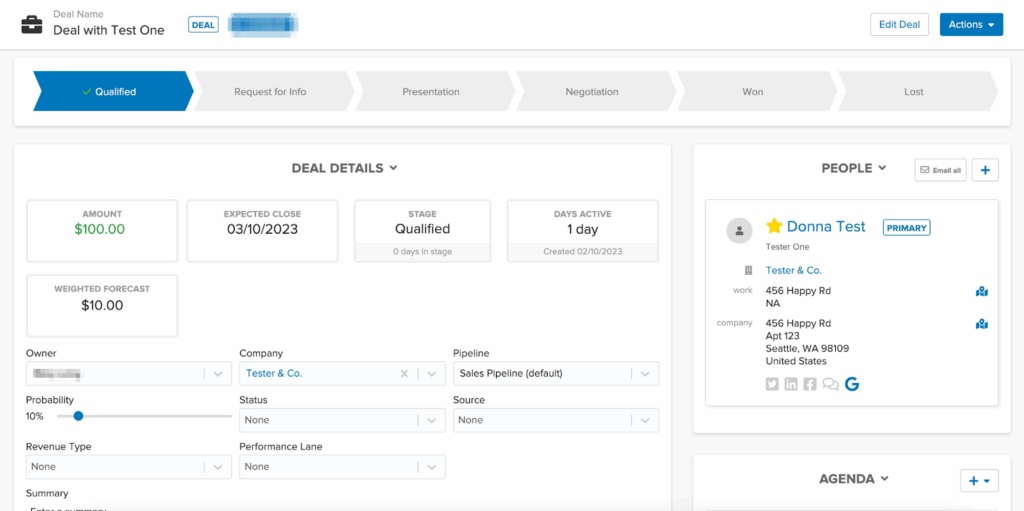
In-call CRM Support: In this phase, you’re using your CRM to log call interactions, events, and outcomes (e.g., connected, voicemail, text, not interested). You’re using this information to guide your future attempts and interactions with each prospect.
If you’re using Pipeline CRM, you should be able to add/view detailed information on important deal specifics including:
- Amount – the total value of this deal.
- Expected Close/Actual Close – the date when you expect to win the deal or when the deal was closed.
- Age – number of days since the creation date for this deal.
- Company – the company that this deal is associated with.
- Owner – the name of the user who owns this deal.
- Status – a color status that describes the health of the deal.
- Source – describes the source that led to the deal’s creation. Helpful for tracking ROI.
- Stage – the stage of the deal in your sales process.
- Probability – the % associated with the deal stage or likelihood of deal closure.
- Summary – description of the deal.
Let’s say your deal was lost, that’s going to impact your performance on future deals. You’ll want to identify the details that had the greatest impact on your performance.
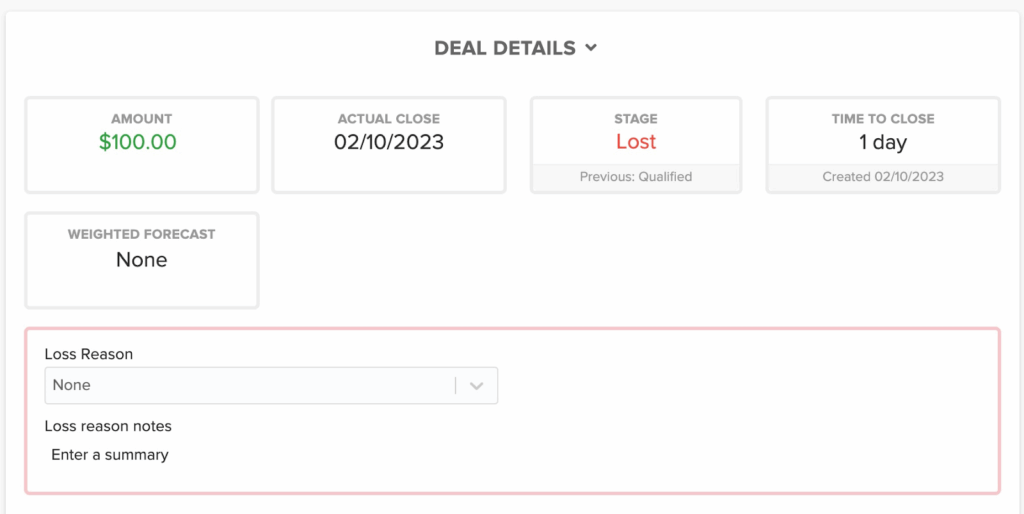
2. Prioritizing Leads in the Future
With the right data, you know which prospects are hot and which ones are not. You have clear markers, metrics, and KPIs and you know what a sales qualified lead looks like.
For example, you look at your activity feed in Pipeline CRM and you see that one of your prospects, Donna, has been engaged and she’s ready to move to the next step.
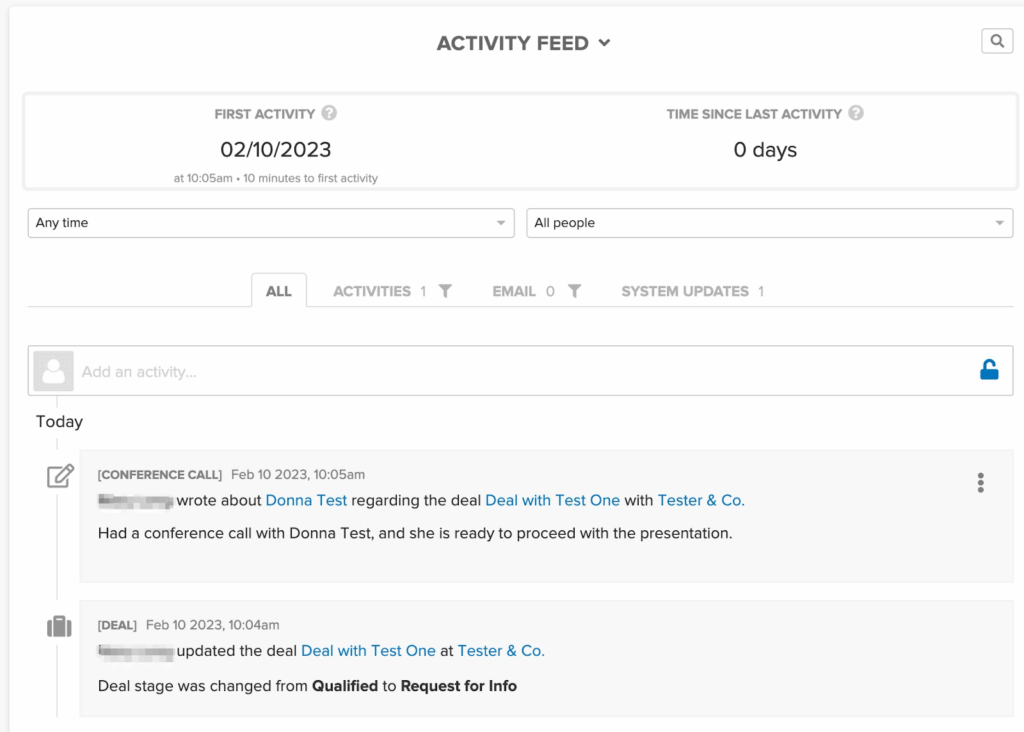
This is great for future prospecting efforts because it tells you how to spend your time. No more wasting time with unqualified prospects who suddenly decide to ghost you and disappear. If you’re engaging with a prospect, it’s on your terms and the data is clear.
3. Post-call Workflows
One great thing about Pipeline CRM is that you can use automation to set up an automatic sales follow-up workflow, one with triggers, to-dos, follow-up notifications, and reminders.
For example, let’s say you’ve gotten through to a prospect. Your pitch was amazing, and they’re ready for the next steps. You can create an automation that sets up all of your follow-up actions automatically.
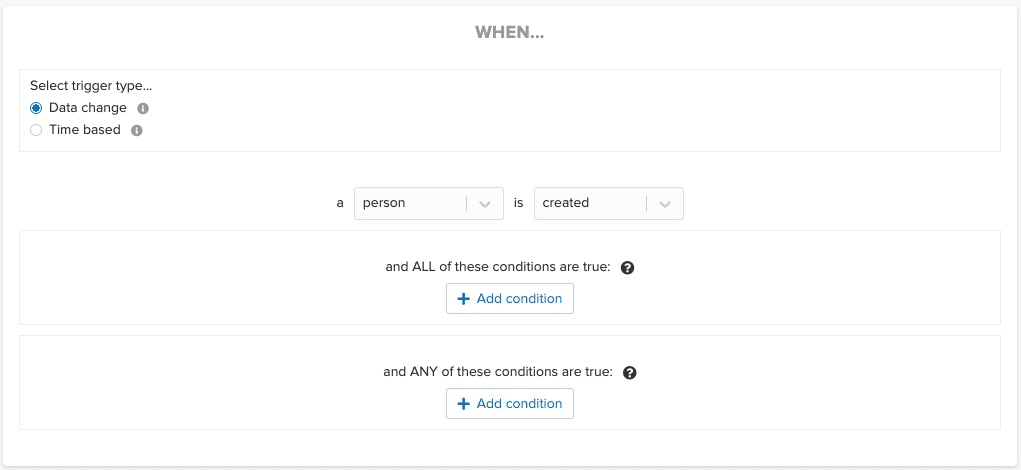
So whenever a new person (contact or lead) is added to your Pipeline account, this workflow will automatically create a task to follow up with your prospect:
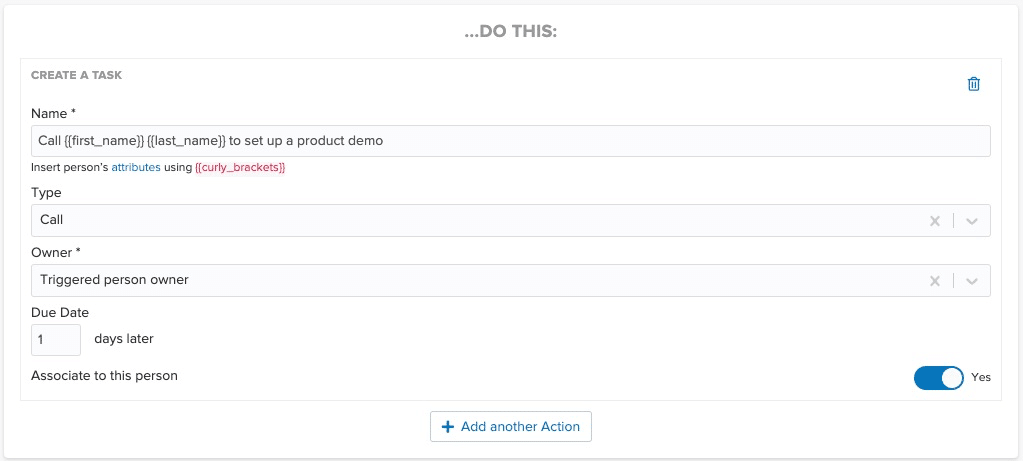
If only 3% of prospects are active buyers, the rest of your leads need to be nurtured. This simple automation is a simple and straightforward way for your company to boost revenue automatically!
This is fantastic news!
With simple workflows like these, your sales reps won’t have to wonder about the work that needs to be done. There’s no confusion, or missing information about the work that needs to be done. They add a prospect to Pipeline CRM, and they’re given a series of revenue-generating activities they can follow.
No administrative busywork required!
Best Practices for Qualifying Cold Calls
Before you lock down a meeting and even before you pick up the phone, you should be trying to qualify your leads to figure out how much time and energy you should spend on them.
Below are techniques for weeding out dead-end leads and focusing on the promising ones.
Key Takeaway: Qualifying leads before calls improves efficiency and increases the chances of meaningful conversations.
1. Qualify Before You Call
Before you call, examine the prospect’s buyer persona and see if it matches with your ideal customer. What’s the prospect’s job title? What are their daily job responsibilities? Is their company the right size for your product? You can find most of this information quickly online without having to speak with someone at the company.
Along with looking for the answers to those questions, you may also be able to see if the lead has taken any actions on your website that indicate they were interested in speaking with you. Your marketing team may have this information ready for you, along with other details like buyer persona and website behavior data. Use this data to your advantage to learn how much the customer knows about you and if their behavior indicates they would be interested in your product or service.
2. Discuss Problems
3. Use a Popular Qualifying Method
Choose a popular qualifying method like BANT to qualify leads. BANT stands for budget, authority, need, and timing, as in:
- Do they have the budget for what you’re offering?
- Does the person you’re speaking to have the authority to make purchasing decisions?
- Do they need to purchase the product or service you are offering?
- Can you expect to close the sale in a reasonable amount of time?
What are the Benefits of Cold Calling?
Cold calling can produce various positive effects, such as helping identify promising clients and gain insight into your ideal clientele.
In the call, you’ll learn who the decision-maker is at a company and put yourself in a position to gain access to them. Additionally, you can learn from failed calls by evaluating patterns to see who is most interested in the product or service and how you can improve your message.
Pro tip: Pipeline CRM dialer integration offers an automatic call recording feature that can help your sales reps remember every interaction they have with leads—eliminating missing information or deadlines.
Another outstanding benefit is that you will put a human face on your company as you speak with customers directly rather than through emails or ads. Also, you can increase your conversions by scheduling pitch meetings and putting yourself in the position to speak directly to a decision-maker.
Support Your Cold-Calling Sales Outreach with a Robust Sales CRM Solution
If you’re searching for CRM software that can help you achieve more effective cold-calling sales results, try Pipeline CRM.
Our award-winning CRM software provides an intuitive platform that assists with account management, revenue generation, sales pipeline management, and data migration, among other features.
Sign up today and try Pipeline CRM for free for 14 days!
FAQs About How to Achieve Successful Cold Calling
1. Is Cold Calling Illegal?
Cold calling is generally legal, but there are rules to follow. In the U.S., the TCPA restricts calls to numbers on the Do Not Call registry, and some states require consent for automated calls. Always respect opt-out requests and local telemarketing laws to stay compliant.
2. How Do You Make a Cold Calling Script?
To make a cold calling script, start with a clear objective. Open with a statement or question immediately benefits the prospect, then briefly introduce yourself and your company. Ask open-ended questions, and have prepared responses for common objections. End with next steps, like scheduling a follow-up.
3. When Is the Best Time to Cold Call?
Mid-morning (10–11 a.m.) and mid-afternoon (2–4 p.m.) are generally effective for cold calling. Test your timing with your specific audience, as different industries and regions may respond differently. Tools like Pipeline CRM can track engagement patterns and help refine your schedule.
4. How to Overcome Cold Calling Fear?
Shift your mindset to helping rather than selling. Prepare thoroughly by researching prospects, setting objectives, and rehearsing your opening. CRM features like autodialers, scripts, and organized note-taking can reduce stress and make calls more manageable.
5. What Are Some of the Best Tips for Cold Calling Beginners?
Research your prospects and understand their industry, role, and challenges. Lead with value by sharing relevant insights or solutions, and keep calls short—focus on qualifying leads or scheduling follow-ups rather than closing on the spot.



